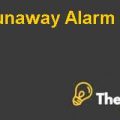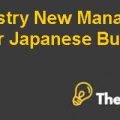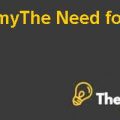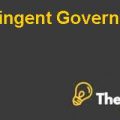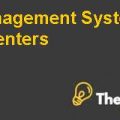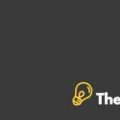INTRODUCTION
A UK bid has been received by the Dozier Company on January 13, 1986. This bid was from one of the American based firm, which was a large manufacturing firm in United Kingdom. This bid was set for an international sales contract to build an internal security system. The price of this project was decided in the UK currency which was set at 1175000 pounds. After the revenue for this project would be received it would need to be converted to US dollars for the company. The bid for this project was issued on the 3rd of December 1985 and the profit for this project was estimated at about 6%.
PROBLEM STATEMENT
The exchange rate between the US dollars and UK pound was changing since then and these fluctuations were so rapid that there was a risk that the company might have a loss on the project at the time when it receives its bid price. Currently the management of the Dozier has four different alternatives to decide from to hedge the risk and these are to do nothing, use a forward contract, use a money market hedge or buy the options on this contract.
HEDGING OPTIONS
DO NOTHING
If the management of the company decides to do nothing then, the company would be exposed to incurring a profit or even a loss. There would be equal chances of a loss and profit. The management is currently not sure which strategy to use but it seems like that it is in the favor of doing nothing. If it does so, this will mean that the management of the company expects that the pound will strengthen in future at the time when the remaining balance of the price of the project would be paid to the company. They expect that the rate of British Pound will remain close to the spot rate and that there would be no severe fluctuations in the rate. In this way the company could earn the 6% profit on this project.
FORWARD CONTRACT
The second option available to the company is to use the forward contract if the company wants to hedge for the risk by taking an opposite position in the market. The management of the company could enter into a 90 day forward contract to sell British pounds. The pounds would be sold at a forward rate of Dollar 1.4198 per pound. The profit under this method would be around 1.7%. The profit calculations are shown in the appendix and it has been calculated by adding the future value of the deposit of 10% for the contract which was received on 13th January and the total amount of the receivable at the forward rate. This amount will then be reinvested in US dollars at the spot rate of that date. The profit percentage for this option is very low as compared to the 6% profit. However, if the management of the company thinks that it will achieve the profit on its bid by doing nothing then it should not opt for this option.
MONEY MARKET HEDGE
The third option available to the company is to use the money market hedge. Under this strategy the remaining balance of $1057500 which will be paid to the British company at 1.5% rate above the prime lending rate in UK or at 15% annually. To pay this the company would have to borrow the present value of 1057500. The company will then have to convert this money at the exchange rate of dollar 1.4370 per pound on January 14. After that this money would be invested in United States at an annual rate of 8%. In this way the company could pay back the loan which it had borrowed. This would be paid three months from the current date after the British firm pays to Dozier. The profit for this project would be calculated as the addition of the deposit at 10% paid at 13th January which was invested in the US dollars and the value of the borrowed amount which would be changed to dollars and then invested in the United States. Under this method the company could make a profit of 1.73%. This profit is more or less the same like the profit under the forward contract hence, this method is also similar...................
This is just a sample partial case solution. Please place the order on the website to order your own originally done case solution.
This case deals with the origins of the risk of exchange rate and offers an introduction to methods of hedging. The case emphasizes the connection between interest rates and exchange rates. Students are introduced to the management of foreign exchange risk in a competitive bidding situation. (Case B is UVA-F-0746). "Hide
by All Eaker Source: Darden School of Business 8 pages. Publication Date: March 28, 1991. Prod. #: UV2138-PDF-ENG


